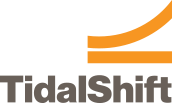IP 100 | Length: 1 day | Credits: 7 PDUs
Overview
Many managers and team members deal with projects that are of short duration, sometimes less than six months, – too big to manage successfully with just a task list on a tablet and too small to benefit from the full array of rigorous, formal project management techniques. Some of these projects include team members who may be new to the area of project management and require exposure to key concepts and best practices in order to achieve effective results.
This course is designed to provide project participants with knowledge and practice using a flexible, efficient ten-step process that provides planning without overkill, control without being cumbersome. In this workshop, participants learn and apply proven project management techniques to smaller, short-term projects.
Using a ten-step process that maps to best practice models and an international project management standard which focus on five key areas (Project Initiating, Planning, Execution, Monitoring & Control, and Closing), participants apply techniques for gathering, analyzing and communicating essential information specific to each step. Working in small teams, participants practice project planning and executing techniques throughout the workshop.
Learning Objectives
Participants will learn how to:
- Define project management and the five process groups of project management
- Apply a flexible ten-step model that provides a framework with tools and techniques to effectively manage a project.
- Apply the appropriate amount of project management to small projects
- Create and interpret project management deliverables such as the Project Charter, Work Breakdown Structure, Project Network, Gantt, Risk Management Plan and Status Report
- Apply project management deliverables to facilitate communication, decision making, and problem solving in a project.
- Control projects by tracking progress and taking corrective action
Instructional Strategies
The workshop introduces main process concepts and proven practices from the Project Management Institute’s (PMI) five process groups, Initiating, Planning, Executing, Monitoring & Control and Closing. The instructor presents each topic in a tell-show-do format using a simple case study. Working in teams of four or five, participants then practice applying the tools and techniques presented in the workshop.
Audience
- Individuals with current or future assigned project management responsibilities
- Individuals responsible for managing small projects
- Project leads or team members working on sub-projects of larger projects
- Project clients, sponsors, and other stakeholders who contribute to projects
Prerequisites
None
Content Outline
INTRODUCTION
- Definition of a Project
- Definition of Project Management
- Project Management Phases
- Ten Project Management Steps
- Key Project Roles
STEP 1 — DEFINE THE PROJECT
- Components of a Project Charter
- Identifying Stakeholders and Developing a Communication Plan
STEP 2 — DEFINE SCOPE
- Generating Work Breakdown Structure
- Generating Work Packages and Activities
STEP 3 — DETERMINE ROLES & RESPONSIBILITIES AND DEVELOP ESTIMATES
- Clarifying and Documenting Roles
- Generating and Documenting Realistic Estimates
STEP 4 — DEFINE WORK PACKAGE & ACTIVITY SEQUENCING AND ANALYZE CRITICAL PATH
- Defining Predecessors and Successors
- Building the Network Diagram
- Identifying the Critical Path
- Using Critical Path Information to Make Business Decisions
STEP 5 — DEVELOP SCHEDULE
- Building a Gantt Chart from a Network view
STEP 6 — GENERATE COST ESTIMATE
- Determining Relevant Expense Categories
- Estimating Costs by activities or tasks
STEP 7 — IDENTIFY ANALYZE AND DOCUMENT RISKS & RESPONSES
- Identifying and Categorizing Risks
- Risk Management Worksheet
- Identifying and Ranking Risks
- Identifying Probable Causes and Developing Preventive Plans
- Developing Contingency Plans and Identifying Trigger Points
STEP 8— APPROVE PROJECT MANAGEMENT PLAN AND ESTABLISH BASELINES
- Validating the Plan
- Establishing Baselines
STEP 9 — TRACK AND MANAGE THE PROJECT
- Collecting Actuals and Comparing Actuals to Plan
- Determining Cause and Analyzing Impact
- Taking Corrective Action
- Tracking and Documenting Scope Changes
- Reporting Status and Revisions
STEP 10 — PERFORM POST-PROJECT REVIEW
- Collecting Final Actuals
- Project Completion Process
APPENDICES
- Project Management Templates for Use Back on the Job
- Project Management Glossary
